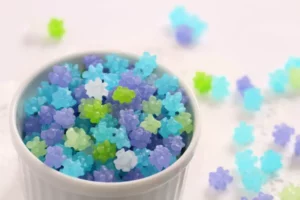Okinawa Island is the largest in the prefecture of the same name. Its bright blue seas and relaxed lifestyle are a refreshing change from the culture of the Japanese mainland. However, the smaller islands in this prefecture also harbor a wide range of attractions, diverse environments, historical sites, and perfect beaches.
They are on tourists’ bucket lists all over the globe and are easier to access than their remoteness suggests. These small outcrops of land possess vast ecological and cultural richness beyond their size. Today, we’ll look at some features that make the Okinawa Islands a must-visit vacation spot.
Table of Contents
ToggleOkinawa Island
Most of Okinawa Prefecture‘s population lives on this largest island. Its beautiful beaches, natural beauty, and unique culture attract millions of tourists annually. Despite its size, the island has many attractions, including World Heritage sites, national parks, and aquariums. Even though it is only about 100 kilometers long and 11 kilometers wide, its size varies considerably from north to south.
Yanbaru
The northern part of the island is called Kunigami. It’s about three hours from the capital, Naha, and an excellent place to experience quiet village life. It’s not as populated as the rest of the island because it is the location of Yambaru National Park. This 300-square-kilometer reserve is mostly subtropical forest, except for Daisekirinzan on Cape Hedo, at the northernmost tip. The landscape there mainly consists of striking limestone rock formations.
Yambaru is home to many unique plants and animals, some of which live only in Okinawa. Travelers from all over the world hike to Hiji Waterfall and take part in guided night hikes. At the park’s southern end, Gesashi Bay Mangrove Forest is accessible via wooden pathways and canoe. Pristine beaches dot the coast, many of which are only reachable by sea kayak.
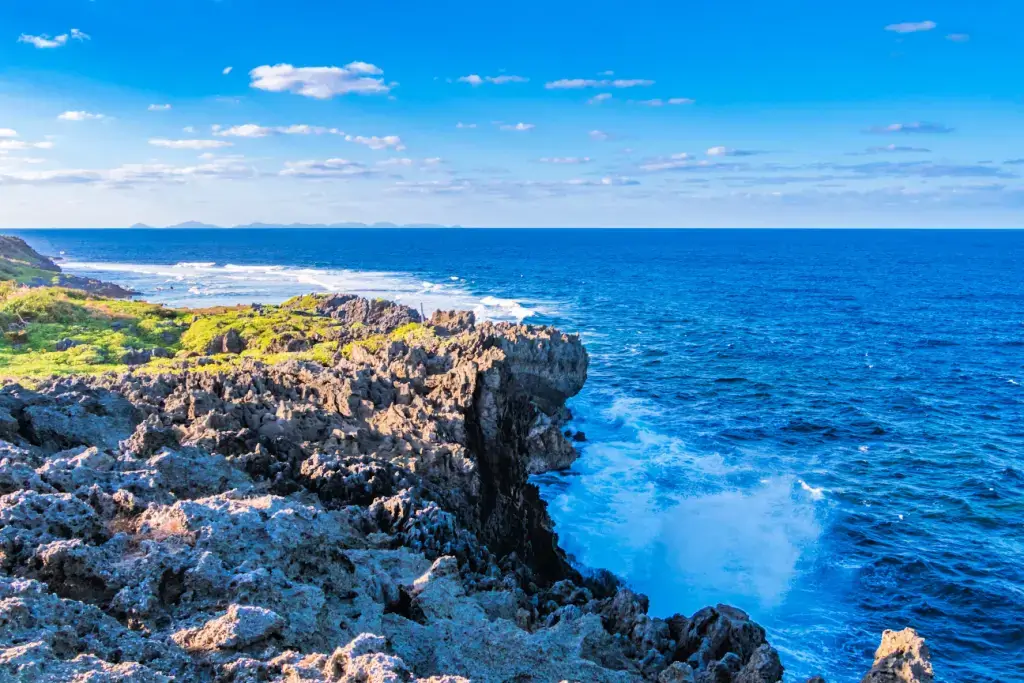
Onna Coast
Onna is south of Motobu, and this stretch of coastline between Yomitan and Nago is the final destination for most visitors to the island. Famous beaches like Tiger, Manza, Mission, Moon, and Diamond mean an abundance of resorts with ocean view rooms. The coastal road provides access to stunning viewpoints, such as Cape Manzamo. Attractions such as Busena Marine Park, with its underwater observatory, lie just off the highway. For souvenir hunters, the central region also has a long history of Okinawan pottery. This heritage is apparent in shops specializing in traditional cookware and statues.
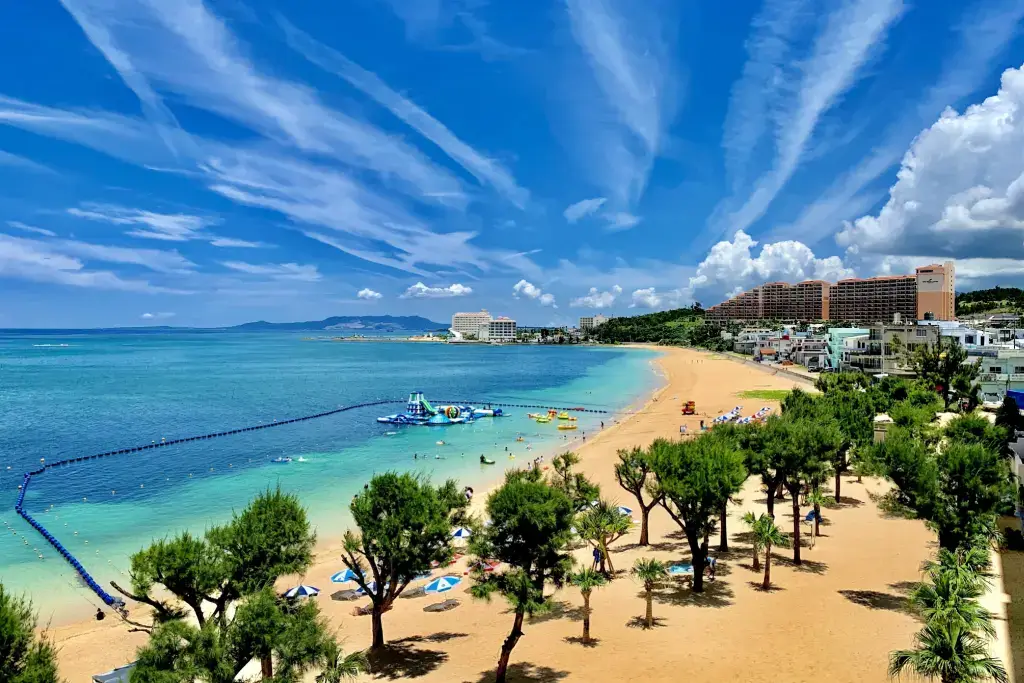
Motobu Peninsula
The remains of Nakijin Castle, a UNESCO World Heritage Site, are located here. These ruins were once the capital of the Ryukuan principality of Hokuzan. Bise Fukugi Tree Road is a few kilometers away. This sandy path is lined with fukugi trees that are hundreds of years old. Its rustic appearance has changed little over the years. This avenue is famous for biking & ox-drawn cart rides. One of the largest aquarium tanks in the world, Churaumi Aquarium, is less than a kilometer away.
Smaller islands around Motobu are so close that they are part of Okinawa Island. Yagaji and Kouri Islands are connected via bridges to the peninsula’s eastern side. Kouri Island’s heart-shaped rock is featured in every Okinawa brochure. On the western side, a drive over a bridge or a 30-minute boat ride transports visitors to tiny Minna Island. Slightly further along is Ie Island with its resorts and much-visited Hibiscus Botanical Garden.
Are you looking for great snacks before your next vacation? Check out Sakuraco! Sakuraco delivers traditional Japanese snacks, teas, and sweets from local Japanese makers directly to your door so you can enjoy the latest treats directly from Japan!
Yaeyama
The Yaeyama Islands include 12 inhabited islands, but some stand out as popular destinations:
Iriomote
Iriomote is a primarily mountainous jungle surrounded by coastal sand. It is part of the Iriomote-Ishigaki National Park, a UNESCO World Heritage site. Visitors can explore mangrove forests by kayaking and visiting waterfalls like Pinaisara and Mariyudu. Stargazing here is exceptional, with the park recognized as an International Dark Sky Park.
Ishigaki
Ishigaki is a mix of traditional culture and modern amenities. It’s the most populated of the Yaeyama Islands and serves as a gateway to the others. It is rich in traditions, including folk songs played on the sanshin and unique blue-green ishigaki yaki pottery.
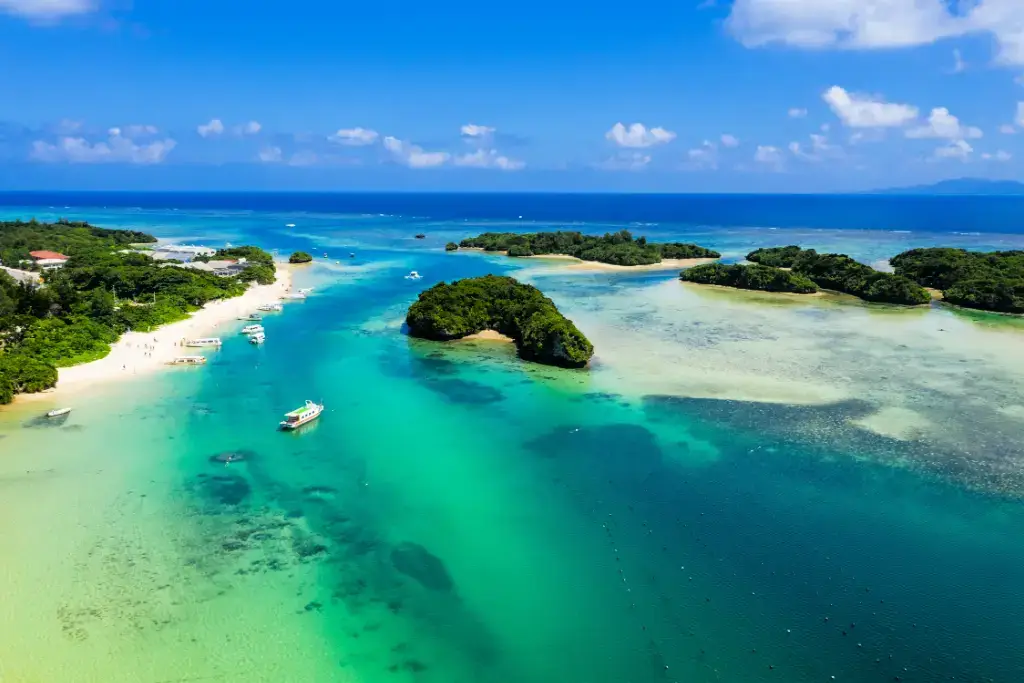
Taketomi
Taketomi is a short ferry ride from Ishigaki. Its well-preserved Ryukyuan village, coral sand streets, and traditional red-tiled roofs are reminiscent of old Okinawa. The Taketomi Folk Craft Museum teaches visitors about local traditions, like Ryukyuan minsah weaving.
Yonaguni
This is the westernmost inhabited island of Japan, known for its unique diving opportunities. Schools of hammerhead sharks frequent this area, and mysterious underwater structures regularly draw international divers. The island is also home to the yogini horse, a rare breed native.
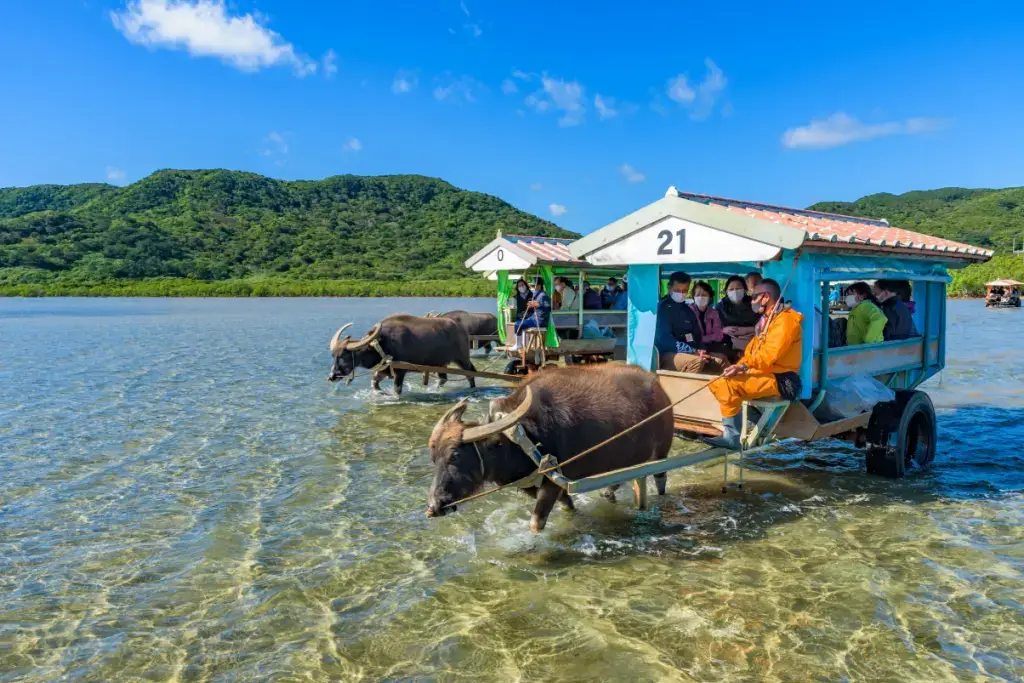
Miyako
Miyako Island is the largest of the Miyako Islands. Diving, snorkeling, parasailing, paddle-boarding, jet-ski rides, and kayaking are all available here. There are glass-bottomed boat trips to the reefs for the less active. Travel to neighboring islands by car is possible via Irabu Bridge, the longest toll-free bridge in Japan. It connects Miyako to Irabu Island, and there are smaller bridges to Shimoji Island.
Miyako boasts quite a few famous beaches. Yonaha Maehama Beach, Aragusuku Beach, and Sunayama Beach are famous throughout Japan. Not to mention, Igashi-Hennazaki and Nishi-Hennazaki capes have dramatic coastal views. Local delicacies like Miyako beef and Miyako soba are other great reasons to visit.
Kerama Islands
This island group is part of Keramashoto National Park and is renowned for its clear waters.
Zamami
Zamami’s tranquil beaches are perfect for relaxation. The area has excellent diving, especially from January to April when whales migrate through. Colorful fish and sea turtles are visible even when snorkeling near the shore. Car and bike rentals make exploring the island extremely easy.
Aka
Aka Island is another diver’s paradise. The reefs that surround this secluded destination are full of marine life. The Sango Yuntaku Kan Visitor Center provides information about the area’s ecology. On land, there are several observatories, such as the Nakadake Observatory, from which captivating ocean sunsets can be appreciated.
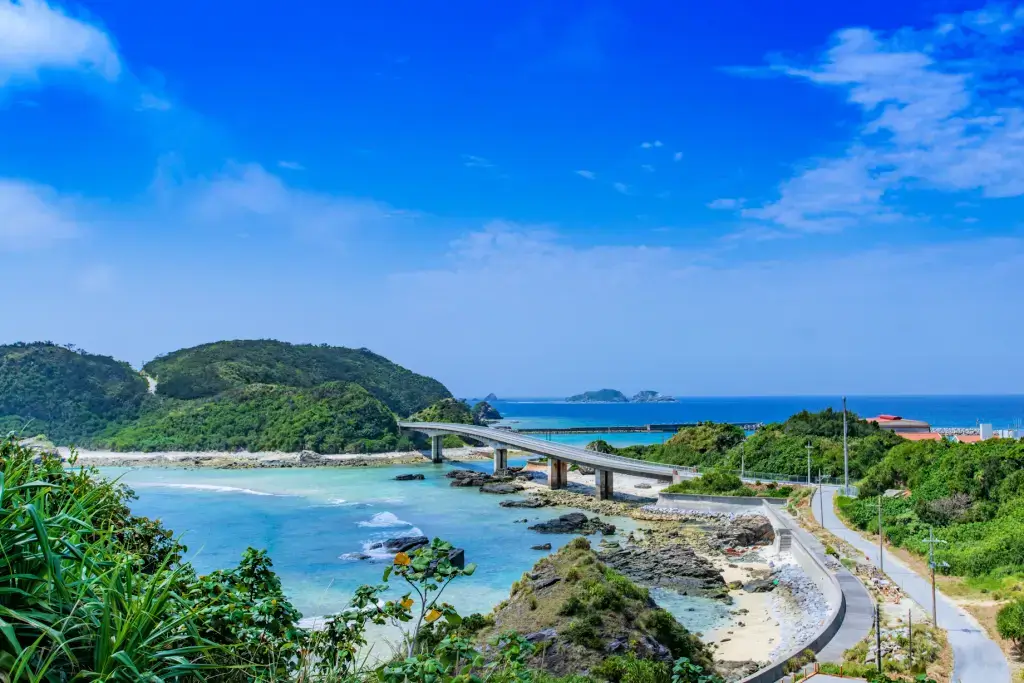
Tokashiki
This is the largest of the Kerama Islands. Popular activities include watersports at Aharen Beach and turtle-watching at Tokashiku Beach. Tokashiki also has numerous observation decks from which to enjoy its natural beauty.
Geruma
Geruma Island is quiet and undeveloped. Its village is full of the traditional coral-stone walls and red-tiled roofs commonly associated with Okinawa. Azanamui Beach and Azanamui Observatory are popular destinations. The island is connected to Aka Island by bridges, making exploring further easier.
Why should I visit Okinawa Island?
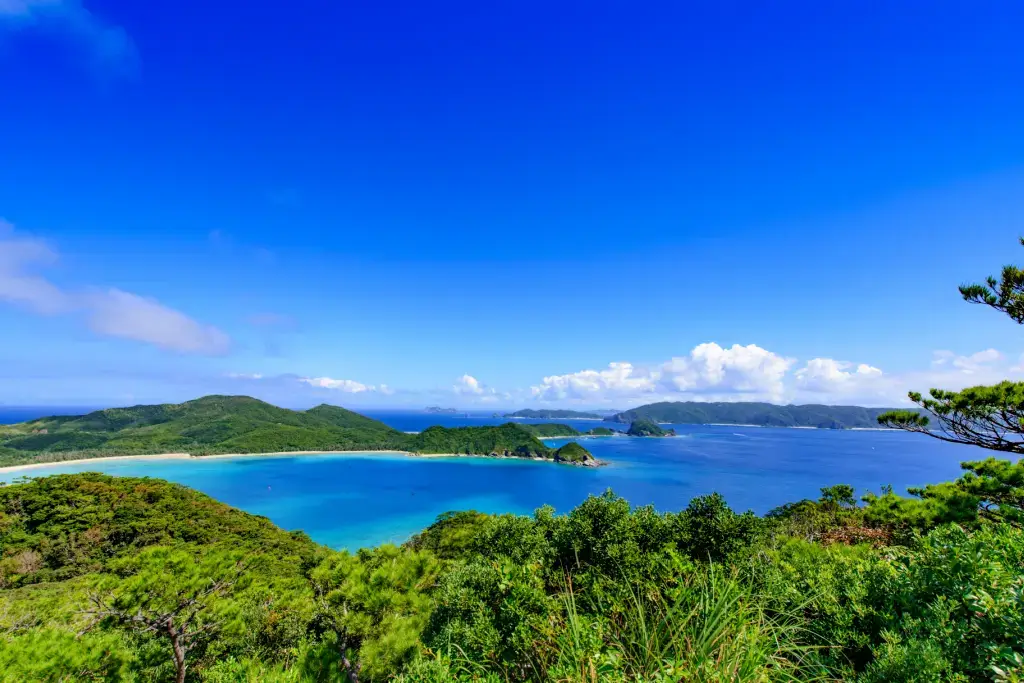
Okinawa and its surrounding islands blend natural beauty, tradition, history, and adventure. There’s something for everyone: hiking through lush forests, diving into vibrant coral reefs, and exploring historical sites are all options. The Okinawa Islands are a captivating destination—each island presents once-in-a-lifetime experiences. Be sure to discover the charm and diversity of this Japanese archipelago on your next vacation. Have you visited Okinawa? Which of the above-mentioned was your favorite? Are there any places you would like covered in future articles? Share your thoughts below!





